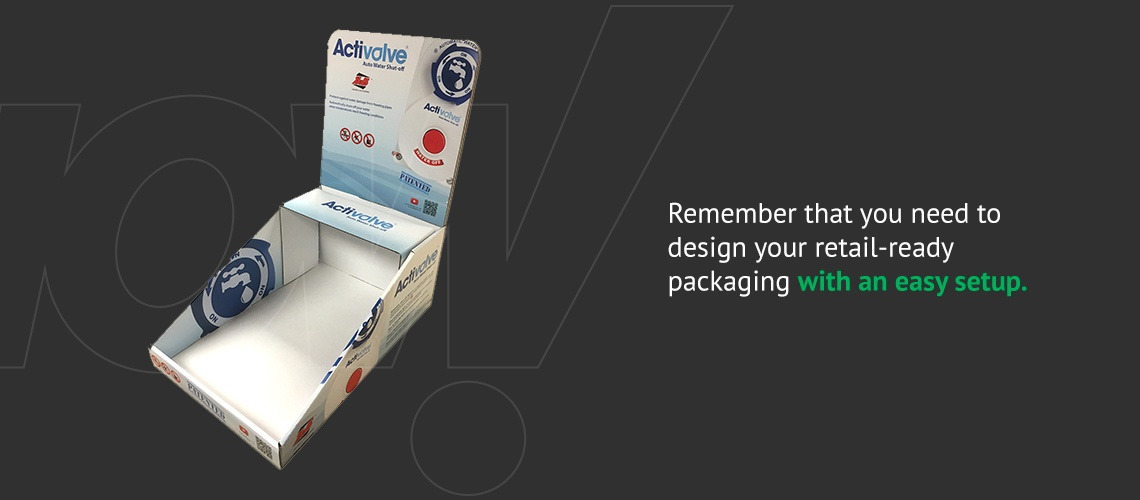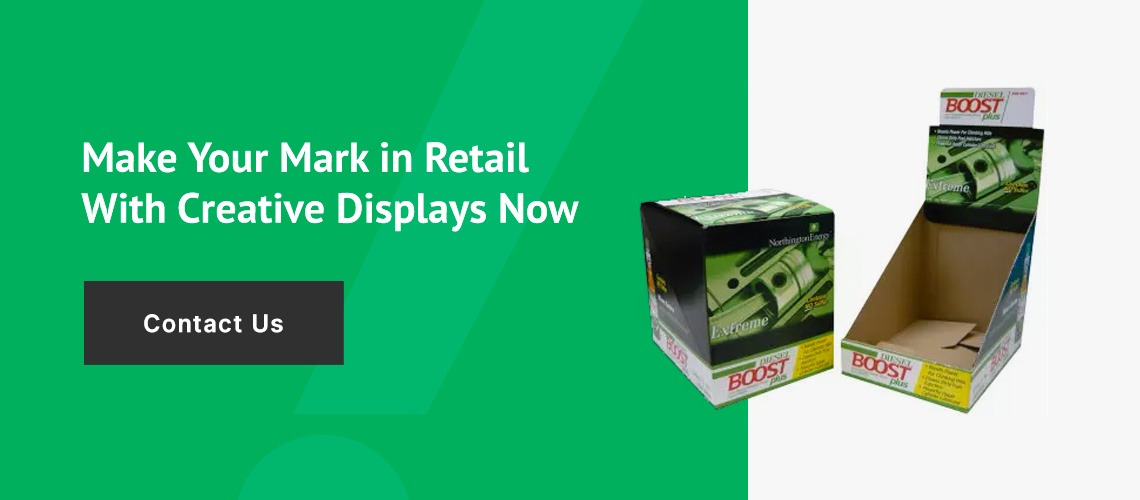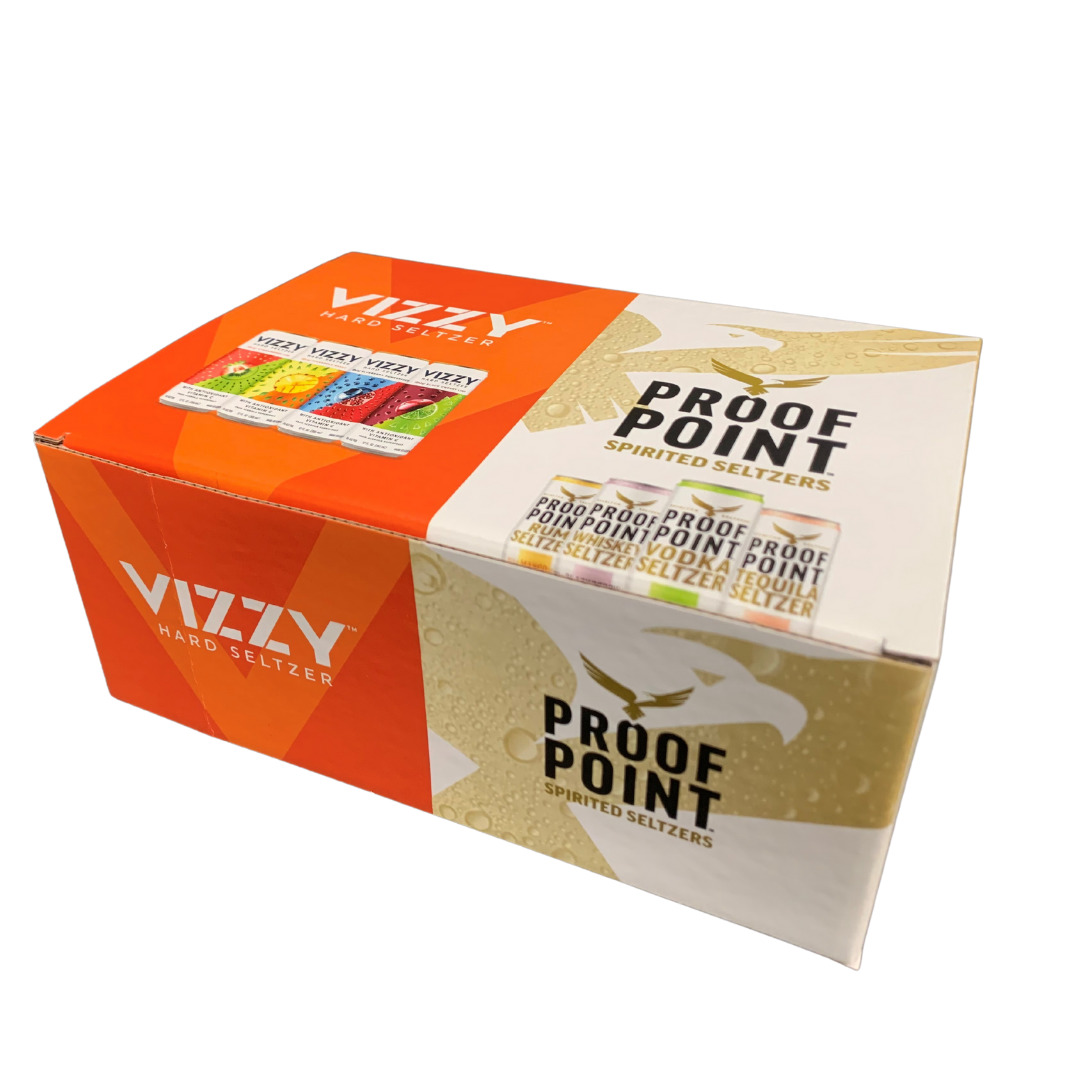Anyone in the world of retail knows all the factors that go into curating an exceptional customer experience. Small details like the music played over the speakers and the layout of the shelves and clothing racks set the customer’s journey in motion, often unbeknownst to the consumer themselves. From the type of flooring to the brightness of the lights and even how a store smells are frequently conscious decisions retailers make to entice window shoppers and convert them into buyers.
These same rules and standards apply to retail packaging. Regardless of how effective or unique your product is, if your packaging message falls flat, so will your sales.
Whatever industry you’re in, you have competitors, and all of them are vying for the same target audience as you. New merchandisers and creators are making their way into the market, and if your packaging doesn’t catch your audience’s attention, they’ll go for the brand that does. This makes retail packaging design more important than ever.
In this article, you’ll learn six elements you need to create retail-ready packaging (RRP) that can transform your sales. We cut out the guesswork and break down the essential dos and don’ts of curating an unforgettable and powerful display that can influence consumers and turn your brand into a household name.
From defining retail-ready packaging to delivering a simple, easy-to-follow formula for creating your next design, you’ll learn how to stand out from the competition and make your mark in the retail space.
Table of Contents:
- What is Retail-Ready Packaging and Why is it Important?
- What Makes a Product Line Stand Out?
- 1. The Design Structure
- 2. Meeting Retail Requirements
- 3. Product Dimensions and Store Placement
- 4. Brand Messaging
- 5. Addressing Your Target Audience’s Needs
- 6. Consider the Setup, Breakdown and Disposal
What is Retail-Ready Packaging and Why is it Important?
Retail-ready packaging, also known as shelf-ready packaging, is an in-store display of a product packaged for stocking and sale optimization. Most retailers, brands and superstores sell large quantities of merchandise. Rather than restocking individual units of a product, distribution centers provide bulk units that carry the products to eliminate restocking for greater efficiency. Retail-ready display cases promote your brand and products, and they save retailers money by reducing labor expenses.
To understand the significance of RRP, you need to appreciate the importance of brick and mortar spaces. Retail stores play a crucial role in the development of a business-to-consumer relationship. While online vendors help connect customers with their specific wants, retail spaces are a destination for consumers to interact with your brand directly.
The purpose of retail spaces is to attract consumers to your products with eye-catching and accessible displays. Your packaging and the associates who restock the shelves fulfill their part in making your merchandise easy to find and purchase. You know when you have chosen the right packaging by how simple restocking is and how quickly your product moves from the shelf to the cash register.
However, retail-ready packaging does much more than connecting consumers with your target customer. Firstly, retailers have specific requirements for in-store packaging that typically don’t apply to their e-commerce counterparts. Display shelves directly address these standards so both you and the retailers can have one less task to worry about.
Secondly, your packaging can be a unique, fun and functional method of serving customers so they are drawn to your brand and can easily recognize it. Nearly three-quarters of consumers (72%) are influenced by a product’s packaging design when making a purchasing decision.
It just goes to show how powerful product packaging really is and why your brand needs to invest in quality RRP now more than ever. It could be that the market isn’t over-saturated — your product just isn’t making the impact that it is capable of. Creating influential retail-ready packaging can bring your brand to the forefront.
See Our Retail Packaging Solutions
What Makes a Product Line Stand Out?
The packaging features that make a product stand out have changed over time. In the 1980s, companies used more generic packaging with large text, no logos and minimal copy. The 1990s saw a surge of color as vibrant hues and explosive fonts for a flashy display that consumers couldn’t ignore.
Today, in the age of information and technology, consumers have different values than they did in the past and are more likely to align themselves with brands that speak to their ideals and modern trends. Therefore, sustainability, brand transparency and minimalism are central factors in buying behaviors.
Additionally, technology is becoming more integrated with packaging. Since barcodes became mainstream in the 1950s, the evolution of technology has inspired companies to design immersive packaging displays with screens, QR codes with hidden messages and websites as a direct line for customer communication.
The following criteria are essential for tapping into a customer’s impulse to buy using retail-ready packaging:
- Eye-catching: Packaging displays need to catch the attention of two groups — retail workers and consumers. In a stockroom full of merchandise and cardboard boxes, your packaging needs to draw the staff’s eyes so they remember to put it on the floor. With a unique or colorful display, they can direct interested customers to your product right away because they’ll remember your exceptional display. And, of course, the customer needs to be intrigued by your brand’s design.
- Accessible: Neither staff nor shoppers want to exert effort when handling merchandise. RRP eliminates the need to restock the shelves one unit at a time and makes it easy to grab an item quickly and keep moving. In addition, customers should have no trouble opening the product. Packaging that requires scissors, knives or box cutters may deter shoppers from purchasing your products.
- Brand apparent: The purpose of building a brand is to create trust and loyalty with your customers. Therefore, your brand’s identity should be clear and recognizable according to your packaging and display. Similarly, the retail-ready packaging should speak to the category and use of the product.
- Adapts to current trends: The buying habits of Gen Z will not reflect those of baby boomers, as younger generations are inclined to hold companies accountable to their social responsibilities. Shoppers have strong principles of cleanliness, health, simplicity and authenticity. As your target customer’s needs and expectations evolve, so should your packaging displays and messaging.
By contrast, packaging that is difficult to stock, open and identify will be overlooked and place unnecessary strain on customers and retail staff. In addition to these key fundamentals of RRP, there are six elements that you should understand before spending time and money on packaging. These standards will help your brand garner attention and recognition, even in the age of online shopping.
1. The Design Structure
With today’s resources of 3D printing, flexography and digital printing, the possible choices for colors, logos and finishes are practically endless. Designers and artists are constantly pushing the boundaries of traditional advertising with new and innovative ways to make their in-store packaging stand out even when surrounded by competitors.
Therefore, the first element to consider when conceptualizing retail-ready packaging is the display’s structural engineering.
Use your product’s packaging style to determine how the product will fit into a shelf, what the display will look like and whether you will need inserts. These factors will inform your budget and requirements for successfully packaging as many units as possible while maintaining a pristine display.
With a solid understanding of your product’s size, shape, weight and packaging, you can start brainstorming designs for unique and creative displays that will spark consumer interest and make your brand stand out from the competition.
2. Meeting Retail Requirements
When you think about how many stores, companies and products there are, it makes sense for there to be retail requirements. Once you have identified the structural engineering elements you want to incorporate in your design, you need to make sure your intended design meets the requirements of retailers who stock your products.
Retailers typically share their inbound logistics and packaging with their suppliers. This information includes pallet sizes, RFID tags, barcode formatting and shipping container requirements, among other guidelines. However, it is generally understood that boxes must be easy to open and ready for immediate stocking. It’s best if retail-ready packaging is designed for intuitive opening or has clear directions. Instead of relying on box cutters, packaging should contain perforations for quick accessibility.
Different retailers often share similar RRP requirements, but some retailers don’t use these principles. Certain large retailers even have their own separate packaging requirements for producers.
As a producer, it is up to you to establish a line of communication and understanding with retailers to create designs for retail-ready packaging that meets their standards. Consider working directly with packagers and manufacturers who are experienced in the marketplace and already know the best practices for meeting specific guidelines, such as Creative Displays Now.
3. Product Dimensions and Store Placement
You can choose from several types of retail-ready packaging, and each one has its own intended placement within a store. Before you can move from the brainstorming and sketching process to ordering and production, you need to think about where your packaging display will have the most significant effect on your target customers.
For example, you can usually find batteries displayed at the front of a store. They are often a last-minute, afterthought purchase that many consumers forget to grab before heading to checkout. Therefore, displaying them in a counter display at the cash register is the perfect solution for both producers and consumers. The examples of well-placed RRP are endless — all you have to do is take a lap around the nearest store if you’re looking for inspiration.
With this in mind, consider the intention of your product and packaging display. In addition to the retail category it falls under, think about where in a store your display will best serve consumers.
Here are the most common types of retail-ready packaging:
- Shelf trays: Retail-ready units intended for shelf placement are typically made from corrugated cardboard or paperboard. The shelf tray design includes a tray as secondary packaging and a cover or lid that protects the merchandise. Retail workers can easily detach the perforated cover from the tray once the product has arrived safely at the store and is ready to go on the sales floor.
- Reusable plastic trays: RRP can also be made from plastic, making it easier to reuse displays rather than throw them away. This reusability allows stores to cut down on waste. However, if a retailer no longer has a use for it, they can easily send it back to the supplier. Plastic trays and displays have slowly left the retail space in favor of recyclable and environmentally-friendly options.
- Merchandising unit: Promotional goods and fast-moving merchandise are usually displayed in a merchandising unit. As the largest type of retail-ready packaging, merchandising units can hold many products away from typical shelving displays. Merchandising units are freestanding displays placed in the action alley for impulsive shoppers. Best of all, these units can promote several types of items without jeopardizing the display’s appearance.
The type of packaging used for your merchandise will depend on the weight, size and category of the product itself. And if your brand places value in green merchandising and production, then those sustainability efforts will also inform what type of packaging best suits your products.
4. Brand Messaging
In a time when consumers have access to unlimited information and proudly share their opinions online for the world to see and hear, there is added pressure to establish transparency and congruency when it comes to packaging.
One study found that two-thirds of global consumers would support or boycott a brand based solely on their political and social affiliations. Today, consumers quickly call out brands that support similar views on paper but fail to represent those alliances in their production or packaging.
Therefore, establishing and representing your brand’s narrative through packaging is essential in creating retail-ready packaging. Moreover, as part of an effective marketing strategy, all packaging should be recognizable and specific across all products within your brand. While products may contain minor differences in terms of color, size or text, there should always be some elements customers can identify, such as logos, color palettes, shape, taglines, tone of voice, fonts and imagery.
If you are searching for the best options for your product packaging, you most likely already have established these identifiers. Now, you need to decide how to represent your brand’s narrative within a retail space.
Remember that your RRP display tells customers your brand’s story. Returning and consistent customers often have feelings of trust, respect and loyalty to your products. For shoppers unfamiliar with your products, your packaging is an introduction to your company. Your retail-ready packaging could be the first interaction they’ll have with you, and you need to make it count.
From the materials you use to create the packaging to the logo, every detail plays a role in how consumers interact with and view your brand.
5. Addressing Your Target Audience’s Needs
Every product is designed with a specific customer in mind. In addition to addressing a distinct need or gap within a marketplace, it is also targeted towards a customer persona who is most likely to find use or value in the product. Your packaging should speak directly to your target audience, perhaps even focusing on just one or two demographics.
In product development, one of the first tasks is establishing the demographics of your target consumer. From the places they shop to their age, knowing every characteristic helps you determine the needs, desires, expectations and standards your audience has so your marketing can build a connection between your brand and your target customer. To develop your retail-ready packaging, you can further use the demographics you already established, such as gender, location, age, occupation, lifestyle, and parental status.
What attracts customers to your product? How can you appeal to them through packaging? How can you show them what this product does and how effective it is?
Consider what matters to your customers on a day-to-day basis and how your product can seamlessly integrate into their lives and make them even better. Does your target customer care more about efficiency and functionality or the style and materials used? Answering these questions will help you determine the type of packaging that will best appeal to your intended customers.
6. Consider the Setup, Breakdown and Disposal
One of the most significant benefits of retail-ready packaging is that it travels well. RRP is generally compact with little to no bulk and is shipped in the same packaging that displays the product on the retail shelves. However, even though the packaging is lightweight, it is durable enough to travel from the supplier to the store.
Remember that you need to design your retail-ready packaging with an easy setup. Perforations already do the job of a box cutter while making it clear to the retail staff how to open and assemble the display correctly. However, another equally important factor in the packaging design is how it will be broken down.
Using cardboard and recycled materials ensures that displays can be dismantled and disposed of quickly and with minimal effort. But as companies produce and ship out large quantities of products, they need to consider how much waste they create and how their production impacts the environment. As government officials and consumers search for ways to reduce our impact on the earth, brands are also held accountable for their contribution to accumulating waste.
Most types of RRP eliminate excess waste, lower shipping costs and reduce the number of trucks needed to carry out the items. As you determine the best displays to showcase your products, consider that the type of material you choose matters for your branding and the setup and breakdown of the packaging.
You made your products with a purpose and a specific customer in mind. It’s not just the efficiency or practicality that sells your idea to the marketplace, but the presentation that reflects the effort, work and passion that make your product worthy of being available to consumers all over. The last step in solidifying your space in your chosen niche is creating spectacular packaging that showcases your product.
Make Your Mark in Retail With Display Ready Packaging From Creative Displays Now
Let Creative Displays Now take your retail displays to the next level with custom retail-ready designs that can help your brand succeed in the world of retail. With more than 60 years of experience, our team of professionals knows how to create outstanding retail-ready packaging that speaks to your brand’s messaging and engages customers. We work directly with the biggest retailers in the country to meet retail requirements and make an impact in the marketplace.
We can do all the work, from the design process to shipment, so you can rest assured knowing your ideas and products are handled with as much passion and care as you give them. Curate the ultimate in-store customer experience with Creative Displays Now by starting your display today.












